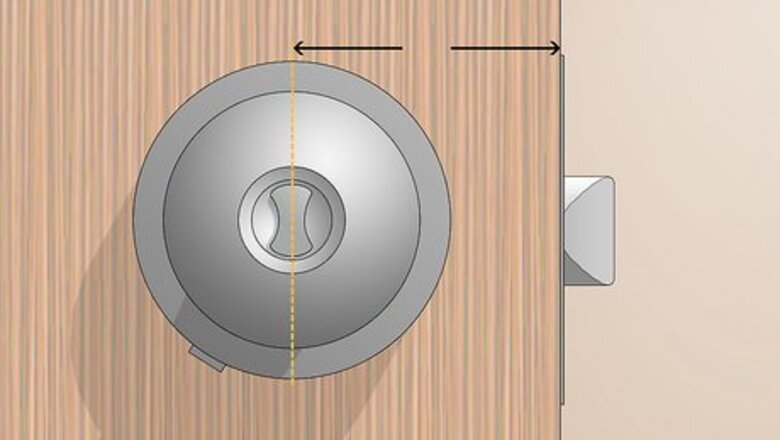
views
Door Lock Removal
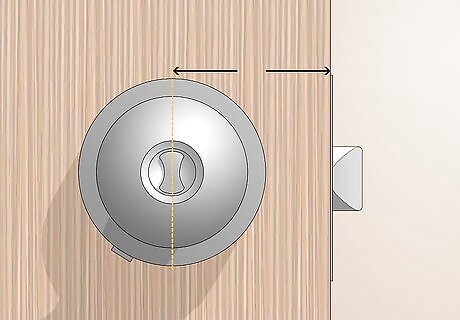
Measure the size of your doorknob. Often, front and back door locksets will be larger than interior locksets, and commercial locksets will be a bit different from residential ones. Knowing in advance which size you need will save you headaches later. Draw a tape measure from the latch edge of the door to the center of the doorknob or deadbolt lockset. Most contemporary locksets are either 2-3/8 inch (6cm) or 2-3/4 inch (6.5cm) diameter. The bolt or latch in many new locksets are adjustable for both, but make sure before leaving your hardware store to keep from having to backtrack. Older locksets may vary in size, but are generally smaller, requiring more extensive carpentry (and greater woodworking skills). If that's what you have, try checking vintage renovation stores for a "new" lockset. Tip: Determine which brand of lock you have. This is usually printed on the latch, but can also be found on the key — useful if the plate has been painted over, or is a leftover from an old doorknob set. You won't need an exact replacement of your old lock, but knowing the brand, style, setback, and features of the old lock will help ensure that your new lock looks, fits, and works as advertised.
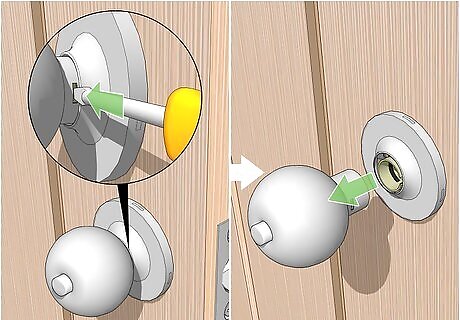
Remove the interior knob, if possible. Release the springs holding the knob in place. The doorknob should come off easily, leaving you only with a decorative cover. If the springs on the knob cannot be accessed before removing the decorative cover, remove the interior cover first before removing the knob.
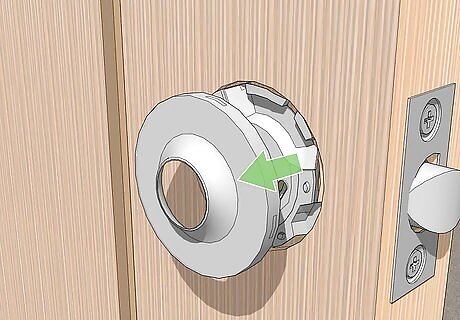
Remove the interior decorative cover. The screws for the cover may or may not be visible once you remove the knob. If they are, simply remove them and set them aside. If they are not visible, look along the edge for a hole, where they sometimes hide an allen bolt. If there are no holes or hidden screws, the plate is simply snapped in place — use a thin flathead screwdriver to gently pry off the cover, exposing the locking mechanism.
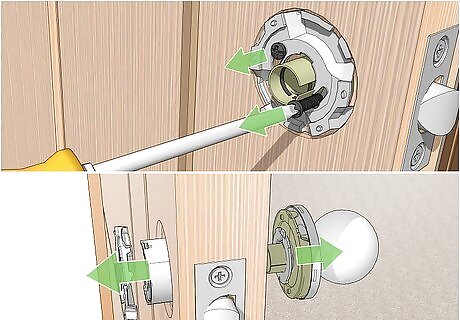
Disassemble the lock sections by unscrewing the two interior screws. Remove the screws that secure the interior lock section to the exterior half. These are found on the inside half of the knob. Once both screws are removed, simply pull each half of the knob straight away from the door. Don't let the door close or you will either have to re-insert the half of the knob with the "blade" on it or use a screwdriver or butter knife to unlatch it.
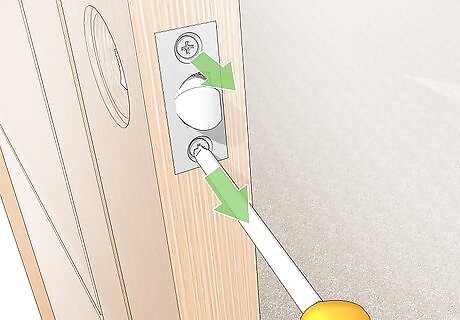
Remove the latch assembly (doorknob). Remove the two screws from the latch assembly on the side of the door. Remove the strike plate on the door jamb as well. If your new lock is the same brand and model as the old one you may be able to keep your existing latch plate and strike plate. Hold the new plates up to the old and compare — if they're the same, it is better to leave the old ones in place if possible. Removing and replacing screws tends to weaken their hold in the door. If you can't get the new screws to bite, you may have to shove a small splinter of wood (or two) into the screw hole and snap them off flush with the edge of the door (toothpicks work well for this). Another alternative is to purchase longer screws, but make sure that the screw heads are identical to the ones provided by the manufacturer or they may not seat properly and cause problems.
Door Lock Installation
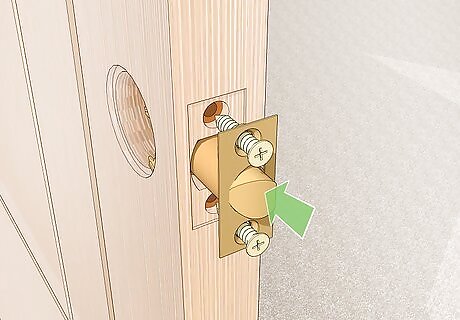
Install the latch. Chisel out any uneven recesses in the latch so that your new latch will fit perfectly. Place the new latch into the recess. If the new latch rests snugly into its recess, don't worry about adding the screws until the remaining parts of the lockset have been installed. If the new latch has trouble staying put in its recess, fit the screws into the latch and then tighten down.
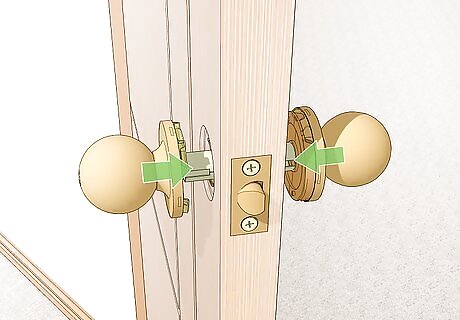
Install your new lockset, making sure that the keyed section is on the outside. Slide the outside parts of the lockset into the hole, through the latch assembly. Holding them roughly parallel to the floor, insert the inside set, sliding it onto blade of the outside part of the lockset. Insert the mounting screws, and tighten them down. Make sure that the strike plate lines up with the new lock. If it doesn't, it's advisable to replace the strike plate.

Test the latch operation and the locking mechanism with the key. Test this with the door open. If something is amiss, you don't want to be locked out!
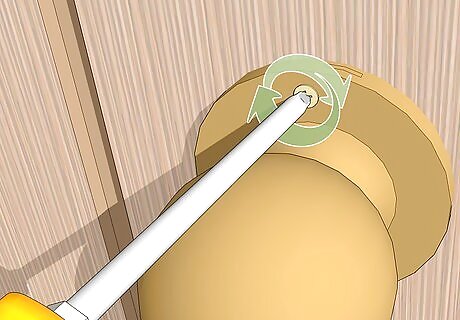
Tighten any remaining screws and check for accessibility. Your new doorknob should be fairly springy, opening and closing with ease.
Deadbolt Removal
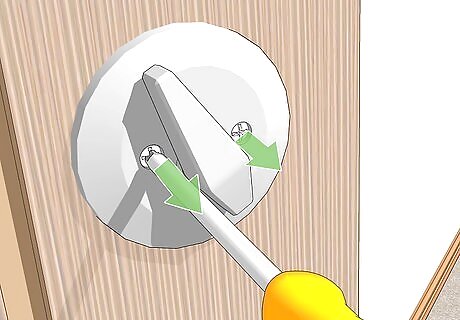
Disassemble the deadbolt lock by unscrewing the two exterior screws. This will allow you to have access to the interior of the deadbolt lock.
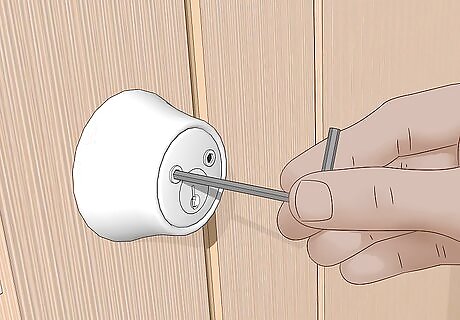
Use an Allen wrench to remove the interior screws from the deadbolt. A couple of quick turns using your Allen wrench (or hex key — they're the same thing) should be able to loosen the deadbolt mechanism from the inside. Remove the inside cylinder and outside cylinder. If your deadbolt lock has decorative caps over the screws, use a punch and hammer to knock the caps off center and then grab them with pliers. Then use the Allen wrench to unscrew the mountings. You can also twist off these decorative caps using your finger. If they still won't budge, drill them out instead.

If you cannot remove the screws using an Allen wrench, you may want to try to drill into the deadbolt to remove it. This is not the best option, and it requires a strong drill bit, but it will help remove a deadbolt. From the outside, drill into the cylinder in the middle of the deadbolt lock where the tumblers are found. Remove the tumblers. Alternately, drill on both sides of the deadbolt, halfway between the top and bottom. Drill through on both sides until the exterior covering comes out. Insert a screwdriver into the latch and turn the knob lock.
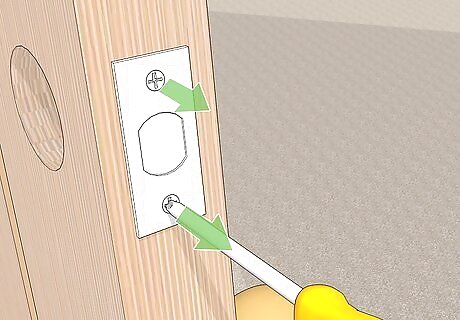
Undo the Phillips head screws on the side of the door to remove the deadbolt. Take the old deadbolt out and clean up any remaining debris or dust from the deadbolt recess.
Deadbolt Installation
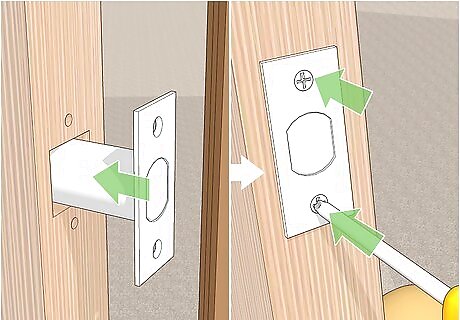
Orient and load in the new deadbolt lock into the side of the door. Make sure the top of the deadbolt is facing up. After lining it up, load in the deadbolt and fasten to the side of the door with two Phillips screws. Be careful not to over-tighten. Once you've installed the deadbolt on the side of the door, use a screwdriver to test the functionality of the deadbolt.

Line up the tongues of both the interior and the exterior cylinders into the deadbolt controller. The tongues of both cylinders are flat on one side and curved on the other. Fit both tongues into the cylinder so that the flat sides are touching each other. For ease of installation, fit one cylinder in first, and then the other; fitting in both at the same time can be difficult.
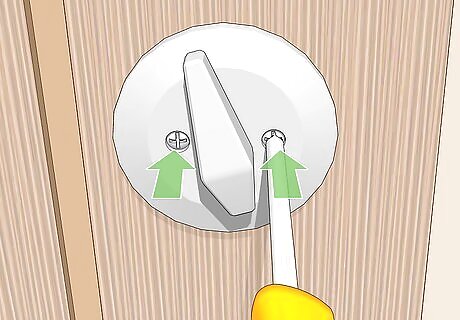
Screw in the screws on the interior of the door. Screw in both screws and fasten tightly, but not so tight that the deadbolt is off-center.
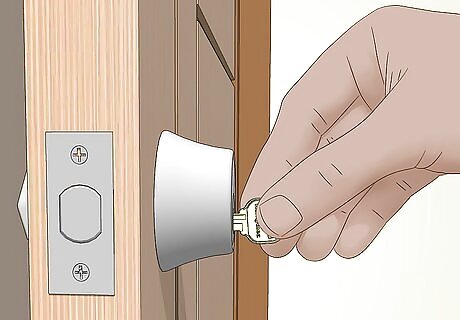
Check that the deadbolt performs its job as advertised. Fit your key into the deadbolt and turn. Look for a nice fluid turn. Check that the deadbolt is centered.




















Comments
0 comment